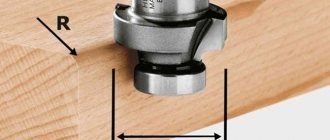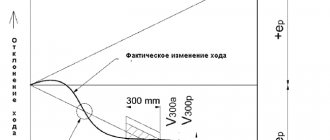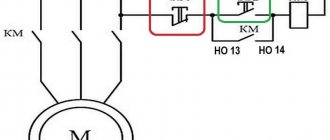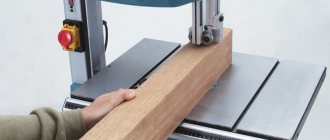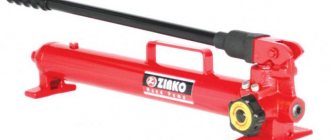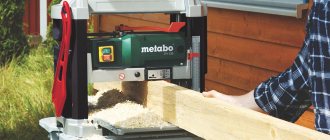The number of cars in Russia is increasing every year , and at the same time the number of worn tires is also growing.
The main recycling method - processing into crumb rubber - does not cover the full volume of secondary rubber-containing raw materials.
And although in recent years the rate of production of seamless coatings and asphalt from tire crumbs has increased significantly, large volumes of used tires remain unutilized.
What happens to the rest of the raw materials? Basically, rubber simply accumulates in landfills, increasing their already overwhelming volume.
Recycling by pyrolysis is a modern way of recycling tires and other rubber goods. It is successfully used abroad, but is not very popular in Russia yet.
How is tire recycling done?
Pyrolysis is the most cost-effective way to process rubber from used tires and other rubber goods, while not polluting the environment with combustion gases .
It goes like this:
- The tires are pre-separated into front and side tires using a bead cutter.
- The cut tires are loaded into a special container (retort), which is sealed and placed in the oven.
- The oven heats up to 450 0C and the pyrolysis process begins, during which gas is released. When the decomposition of the raw material ends, the retort is removed and replaced with a new one.
- After cooling, which takes several hours, the container is unloaded, separating the carbon residue from the metal cord.
The procedure differs from conventional combustion in the absence of oxygen, which is necessary for combustion.
Under such conditions, chemical reactions occur, as a result of which gaseous oil fractions are released , and carbon powder and cord remain in the oven.
The production is waste-free, since all pyrolysis products are used in industry, bringing good profits.
Burning tires to generate energy
From an environmental point of view, the use of used tires for energy generation is controversial. This is primarily due to the release of zinc compounds and sulfur oxides into the atmosphere.
Using the example of extinguishing a fire in a warehouse in Canada (14 million tires), the features of the impact of tire burning on the environment were examined. The smoke from burning tires contains carcinogenic substances and small amounts of dioxin. Tire fires in Canada were extinguished for 17 days with the help of firefighting helicopters, mud showers and snowfalls. As a result of the fire, hundreds of liters of dioxin-containing oils were formed. Due to the release of toxic fumes, the surrounding population had to be evacuated.
It is noted at the same time that the products of burning tires in furnaces may not pollute the atmosphere and, from a technical point of view, there are no problems in organizing complete and safe combustion of tires in existing furnaces equipped with appropriate emission filters.
However, the creation of furnaces and purification plants to capture harmful gases and heavy metal compounds is expensive. There is information that using tires as fuel requires costs of about 20-25 or even 30-35 US dollars per ton. The method of burning tires is also unpromising from an energy point of view: taking into account the efficiency when burning a passenger tire, the amount of energy is approximately equal to that obtained from burning 3 liters of oil. According to the manufacturers, the energy accumulated in the tire is equal to the energy obtained by burning 27...30 liters of oil (21 liters are spent on the production of raw materials and 6 liters on the refining process).
In England, waste rubber and used tires have been used to generate energy since 1975. The rotary kiln, into which air is tangentially introduced at high speed, has a capacity of 100 tires per hour. Cooler excess air is forced towards the furnace walls, the hottest combustion zone is in the center in the form of a high-temperature vortex. Thanks to this, no smoke is produced and there is no smell. Since 1975, 32,000 tons of waste have been burned, resulting in significant savings in oil fuel and waste disposal costs.
In the UK, Avon also operates a tire burning plant, and is building a plant to generate electricity by burning tires using technology (Germany).
Output products
There are several output products. This:
- liquid fuel;
- carbon-containing residue;
- pyrolysis gas;
- metal cord tires.
Each of these products can be used beneficially.
Liquid output
The output liquid obtained during rubber pyrolysis is synthetic oil , similar in composition to natural oil.
With additional processing, it can replace many fuels and lubricants - gasoline, diesel fuel, oil, etc.
In the US, more than 100 million used tires are turned into diesel fuel every year, and one tire is equivalent to 30 liters of oil.
In a pinch, unprocessed pyrolysis oil obtained from tires can be used as fuel for furnaces and boilers.
Solid carbonaceous residue
Used in various fields:
- in the manufacture of certain rubber products (for example, conveyor belts, insulation materials or new tires);
- in paint and varnish and cement production - as a dye;
- used as a sorbent instead of activated carbon;
- can serve as solid fuel or as a component for liquid fuel.
Pyrolysis gas
This volatile component is similar in composition to natural gas.
is converted into a liquid fraction during the operation of pyrolysis equipment , and the non-condensable residue is used to maintain the combustion of the furnace.
Metal cord
This is the tire core, the only component that does not undergo changes during pyrolysis.
The reinforcing material of car tires is high-quality steel, which, with additional processing, is successfully used as binding wire or remelted .
Find out more about steel cord and how it can be used here.
Crushing (grinding) of worn tires
Shredding (crushing) of tires is considered the most attractive method of processing them, since it allows maximum preservation of the physical properties of rubber in processed products. Grinding methods are usually divided into grinding at positive temperatures and cryogenic grinding.
In the USA in 1990, crumb rubber was produced by crushing worn tires: at positive temperatures 80.90 million pounds; cryogenic method - 30.35 million pounds.
The first plant for producing crumb rubber by cryogenic method in the United States began operating in Ohio in 1979.
Three tire shredding plants are to be built in the UK, processing 12 million tires. annually. The factories will be supplied with raw materials through tire collection and sorting points.
In 1977, a Japanese company developed a cryogenic method for crushing tires. The disadvantage of this method is the high operating costs for liquid nitrogen. Operating costs for crushing and positive temperatures are low, but the cost of equipment is higher than when using low-temperature crushing. In this regard, the company later developed a combined method: coarse crushing at positive temperatures, and subsequent grinding into powder at low temperatures, and built a corresponding compact and fully automated installation with an annual capacity of 7000 tons.
In Japan, crumb rubber is produced from tires (at normal and low temperatures). The quality of crumbs is regulated by the standard of the Japanese Scientific Society (5GSh8), in accordance with which the fractional composition, density, and ash content are determined, and their values depend on consumer requirements.
In the former USSR, several technologies and technological lines for shredding used tires with only textile cord were developed and implemented. Until 1990, there were more than 10 plants producing reclaimed tires from depreciated tires, and each plant had a grinding line. To process tires, we used grinding technology at positive temperatures on roller and mill equipment.
Is it possible to make the equipment yourself?
The design of such a pyrolysis plant for rubber processing is simple; it can be made with your own hands.
This will require pipes of various diameters, shut-off valves and a thermometer.
You can take an iron barrel as a heating chamber, and use a can for a retort.
This equipment will function, but only for scientific and educational purposes. The resulting product is unsuitable for use and requires further purification and processing.
The volume of such “home” production does not allow us to talk about serious benefits.
To independently build a plant that processes an acceptable volume of raw materials, you will need up to 10 million rubles, which is comparable to the price of an average factory-made pyrolysis line.
Pyrolysis is an unsafe process. If air enters a homemade retort during operation of the unit, an explosion may occur , which can result in serious injury.
If we talk about starting a business for converting tires into fuel, it is better to purchase ready-made equipment manufactured by specialists.
Pyrolysis lines of various capacities are now available on the market. Such installations include all kinds of additional components to speed up the process , increase the quantity and quality of output products:
- scrubbers - devices that cool pyrolysis gas with a special reagent and partially condense it into a liquid fraction;
- separators - designed to reduce the moisture content of the remaining gas before feeding it into the furnace;
- condensers - they are where the final conversion of the gaseous fraction into liquid occurs after the scrubber;
- filtering facilities for additional purification of gases emitted into the atmosphere.
Tire pyrolysis
In the most developed countries (USA, Japan, Germany, Switzerland, etc.), pilot industrial installations for the pyrolysis of tires with a capacity of 7...15 thousand tons per year of raw rubber products have been in operation for quite a long time.
Pyrolysis of tire pieces and crumb rubber is carried out in an oxygen-deficient environment, in a vacuum, in a hydrogen atmosphere in the presence of catalysts and without them, in batch and continuous reactors, in a pseudo-boiling bed at various temperatures.
The process of pyrolysis of a mixture of crumb rubber (20%) and oil (80%) was also studied.
Pyrolysis systems popular in the 70s. last century, turned out to be inconvenient to use for any long time. Currently, this direction is considered not to live up to the expectations placed on it. Most of these installations operated in batch mode. The resulting products required additional purification before use, and the costs were not covered by the cost of the materials received.
Experts believe that the problem of pyrolysis of old tires is almost settled due to high costs and low quality of the resulting products.
However, the USA has improved the pyrolysis technology at its Reactor installation. The plant can process 1 million passenger tires annually, producing 160 gallons of No. 2 diesel oil, 500 pounds of high-grade carbon black and 300,400 pounds of steel wire per ton of tires.
How does the stove work?
The technological process on a factory production line goes like this:
- The heated gas is supplied from the furnace through a pipeline to the scrubber, where cooling and partial condensation take place.
- It then passes through special piping, which provides additional cooling, to condensers for final conversion into liquid fuel.
- The remaining gas, which cannot be converted into liquid, is sent for drying to a separator, from where it goes to a pyrolysis furnace for further processing.
The most advanced pyrolysis technological lines catalytic cracking that distill pyrolysis oil into various types of fuel. But such equipment is already a whole plant, both in area and in cost (up to several million euros).
Despite the fact that the tire pyrolysis business is not yet very widespread in Russia, there are good examples of equipment for the pyrolysis processing of domestically produced tires on the market.
Suppliers of pyrolysis plants
Tekhnokompleks LLC (Rostov-on-Don) offers PIROTEX equipment, which provides the maximum volume of high-quality liquid fuel.
Prices vary widely depending on the performance of the equipment and the degree of automation: from RUR 2,870,000.00. for an installation with a capacity of 2 tons per day up to 35,900,000.00 rub. for a monster with 32 retorts, capable of absorbing 28 tons of raw materials per day.
All models and prices are presented in more detail in the price list on the company’s website.
The company also supplies additional equipment that facilitates work with the installation: monorail tracks with electric hoists and hydraulic tippers for crucibles.
The installation for processing tires "ROSEKO" manufactured by LLC "RM" (St. Petersburg) is capable of producing gas and diesel fuel.
The equipment is compactly mounted in a single container and is capable of recycling 2.5 tons of raw materials per day.
The cost of installation is 9 million rubles.
The T-PU1 pyrolysis line produced by PTK Pyroliz-Ekoprom LLC (Nizhny Novgorod) costs only 2.5 million rubles - in the basic configuration with one retort.
It is better to purchase one or two more loading containers for continuous operation. The installation is capable of processing up to 6 cubic meters of raw materials per day, consuming only 1.1 kW/h of electricity.
